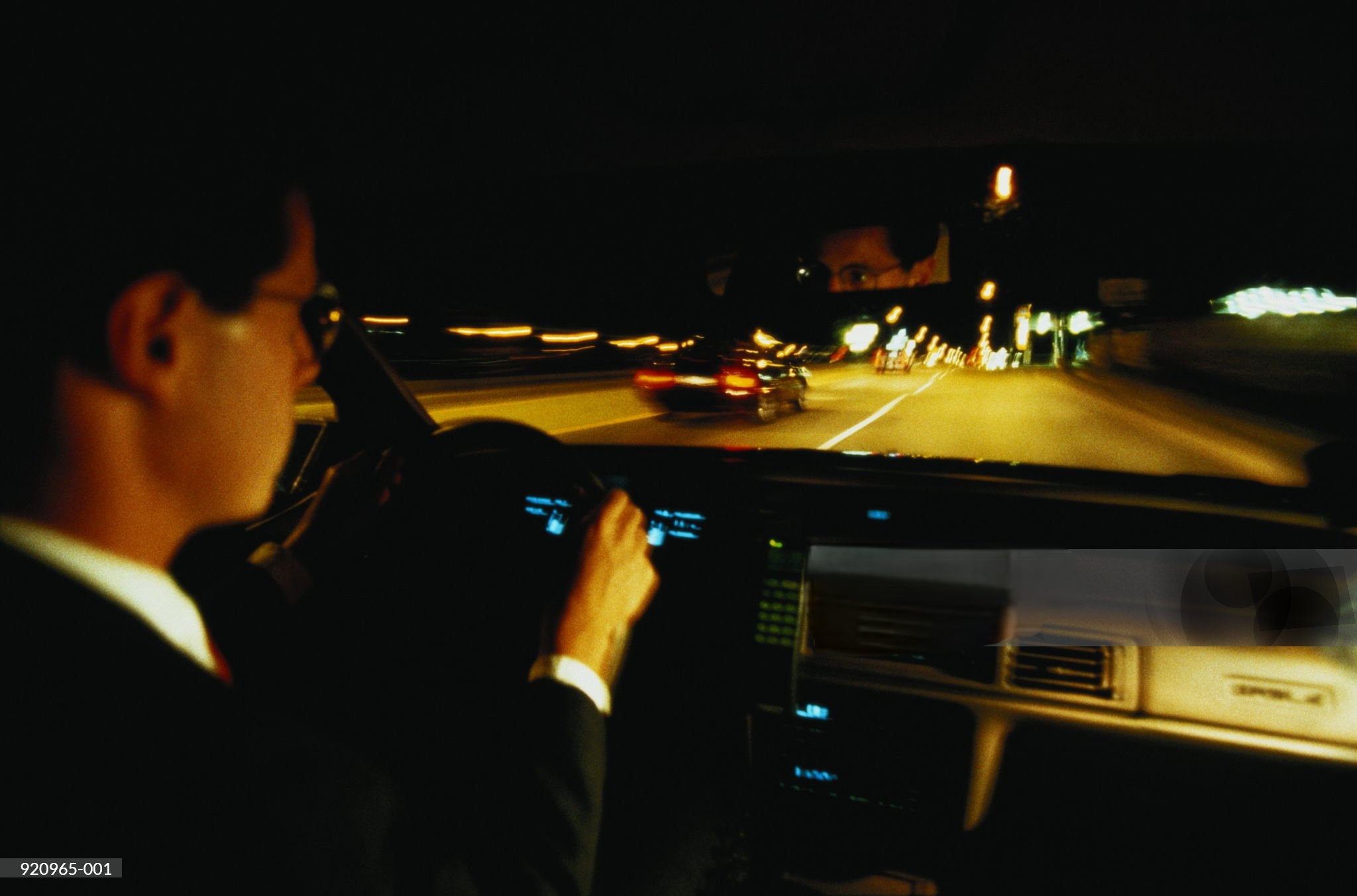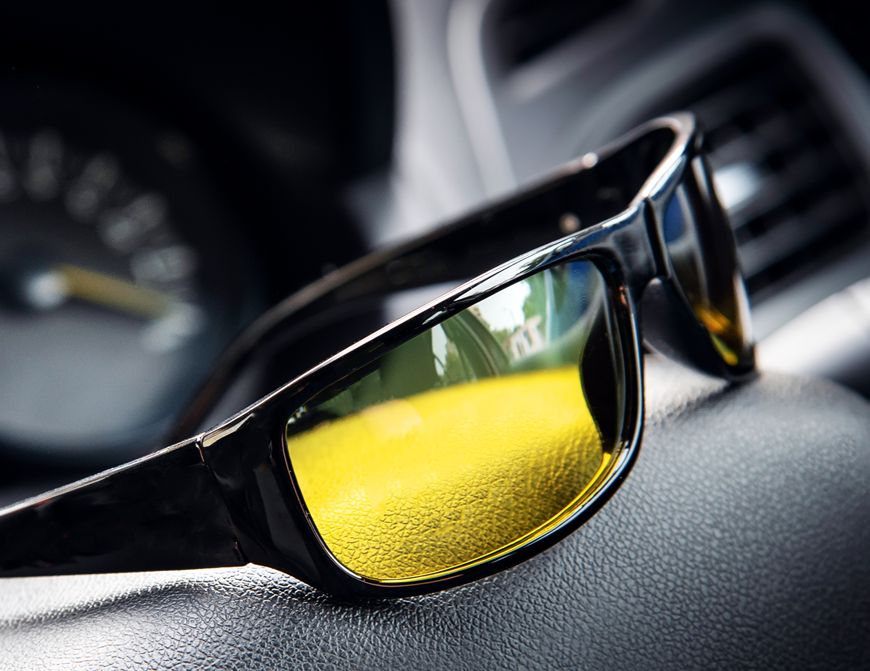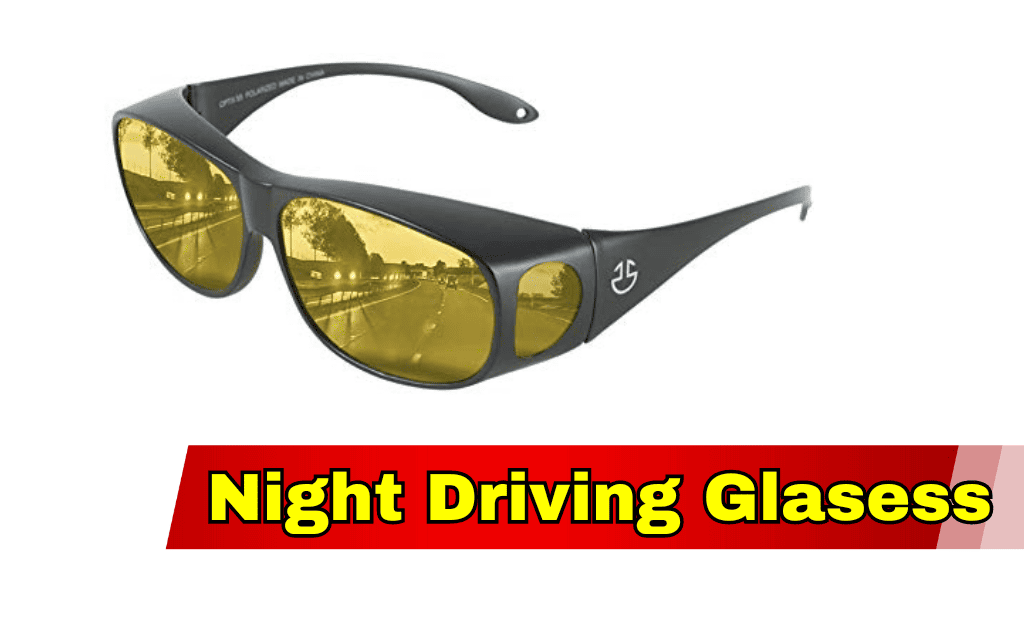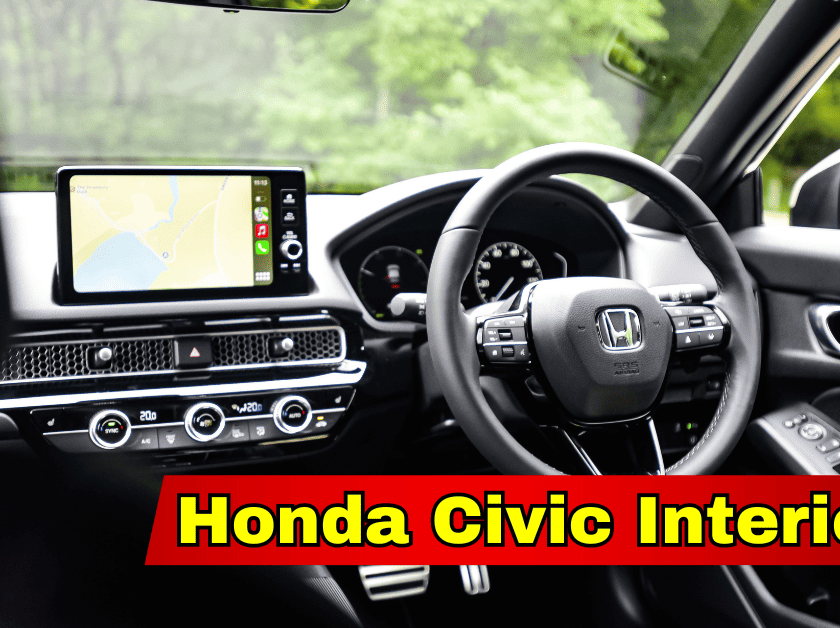Introduction
.1. Low Light Conditions: Exploring the Impact on Visibility
Effects of Reduced Light on Visual Perception
Difficulty in Distinguishing Objects and Hazards
1.2. Glare from Oncoming Headlights: A Common Issue
Causes of Glare at Night
Impaired Vision Due to Glare
1.3. Reduced Depth Perception: Challenges in Judging Distance
How Diminished Light Affects Depth Perception
Risks Associated with Poor Depth Perception While Driving at Night
1.4. Increased Eye Fatigue and Strain: Understanding the Toll on Drivers
Factors Contributing to Eye Fatigue During Night Driving
Consequences of Prolonged Eye Strain on Driver Performance
Importance of Clear Vision After Sunset
2.1. Safety Concerns on the Road at Night: Highlighting the Risks
Statistics on Nighttime Accidents and Fatalities
Importance of Adequate Vision for Safe Driving
2.2. Need for Enhanced Visual Acuity: Ensuring Prompt Recognition of Hazards
Timely Identification of Pedestrians, Animals, and Obstacles
Mitigating the Risk of Collisions Through Improved Vision
2.3. Legal Considerations: Compliance with Driving Regulations
Legal Requirements for Proper Vision While Driving at Night
Role of Night Driving Glasses in Meeting Regulatory Standards
2.4. Personal Comfort and Confidence: Enhancing the Driving Experience
Impact of Clear Vision on Driver Comfort and Confidence
Benefits of Reduced Stress and Anxiety While Driving After Sunset
The Science Behind Night Vision
3.1. Overview of the Human Eye’s Adaptation Mechanism
Role of Rods and Cones in Vision
Differences Between Photopic and Scotopic Vision
3.2. Pupil Dilation: Maximizing Light Intake
Mechanism of Pupil Constriction and Dilation
Importance of Pupil Dilation in Low Light Environments
3.3. Activation of Rod Cells: Enhancing Sensitivity to Light
Function of Rod Cells in Dim Light Conditions
Adaptation Process of Rod Cells to Low Light Levels
3.4. Time Frame for Adaptation: Understanding the Adjustment Period
Duration Required for Full Adaptation to Dim Light
Factors Influencing the Speed of Adaptation
3.5. Limitations of Human Night Vision
Thresholds for Low Light Perception
Challenges in Achieving Optimal Vision in Extreme Darkness
3.6. Factors Affecting Individual Night Vision
Age-Related Changes in Night Vision
Impact of Ocular Health and Visual Impairments on Adaptation
3.7. Practical Implications for Night Driving
Strategies for Maximizing Night Vision While Driving
Importance of Supplemental Aids, Such as Night Driving Glasses

Age:
Explanation: Night vision tends to decline with age due to changes in the eye’s structure and function, such as decreased pupil size and reduced sensitivity of the retina.
Impact: Older individuals may experience more difficulty seeing in low light conditions compared to younger individuals.
Ocular Health:
Explanation: Conditions like cataracts, macular degeneration, and diabetic retinopathy can impair night vision by affecting the clarity and sensitivity of vision.
Impact: People with poor ocular health may struggle to see in low light, increasing their risk of accidents while driving at night.
Light Exposure Prior to Nighttime:
Explanation: Exposure to bright lights before entering low light environments can affect the eyes’ ability to adapt to darkness.
Impact: Individuals exposed to bright lights, such as those working under intense artificial lighting, may experience slower adaptation to nighttime conditions.
Environmental Factors:
Explanation: Environmental factors like ambient light levels, weather conditions (e.g., fog, rain), and the presence of glare from oncoming headlights can affect night vision.
Impact: Poor environmental conditions can reduce visibility and make it more challenging to see clearly at night, particularly while driving.
Medications:
Explanation: Certain medications, such as antihistamines, antidepressants, and sedatives, can cause side effects like blurred vision or dilated pupils, which may affect night vision.
Impact: Individuals taking medications that affect vision should be aware of potential impairments to night vision and take appropriate precautions, especially when driving at night.
Nutritional Factors:
Explanation: Nutritional deficiencies, particularly in vitamins A and C, zinc, and omega-3 fatty acids, can impact retinal health and night vision.
Impact: Maintaining a balanced diet rich in essential nutrients is important for optimal eye health and night vision.
Alcohol Consumption:
Explanation: Alcohol consumption can impair vision and coordination, including night vision, by affecting the central nervous system and slowing down neural processing.
Impact: Consuming alcohol before driving at night can significantly increase the risk of accidents due to impaired vision and judgment.
Glare Reduction:
Explanation: Night driving glasses are designed to minimize glare from oncoming headlights and other bright sources of light on the road.
Mechanism: Specialized lens coatings or tints work to filter out excessive light, reducing glare and preventing discomfort and visual distractions for the wearer.
Impact: By reducing glare, night driving glasses improve visibility and help drivers maintain focus on the road ahead, enhancing safety during nighttime travel.
Enhanced Contrast and Clarity:
Explanation: Night driving glasses often feature lenses optimized to enhance contrast and clarity in low light conditions.
Mechanism: Specific lens tints or coatings are utilized to sharpen visual acuity, making it easier to distinguish objects, road signs, and hazards in the dark.
Impact: Improved contrast and clarity enable drivers to perceive their surroundings more clearly, reducing the likelihood of missing important visual cues and enhancing overall situational awareness while driving at night.
Reduced Eye Fatigue and Strain:
Explanation: Night driving glasses are designed to minimize eye strain and fatigue commonly experienced during prolonged nighttime driving.
Mechanism: By optimizing light transmission and reducing glare, these glasses help alleviate the stress placed on the eyes, allowing for more comfortable and relaxed driving.
Impact: Reduced eye fatigue and strain contribute to improved driver comfort and concentration, promoting safer and more enjoyable nighttime journeys.
Minimized Effects of Headlight Halos and Starbursts:
Explanation: Some individuals experience halos, starbursts, or visual disturbances around bright lights, particularly at night, which can impair vision and cause discomfort.
Mechanism: Night driving glasses can help mitigate these effects by filtering out specific wavelengths of light associated with halos and starbursts, providing clearer and more comfortable vision.
Impact: By minimizing the visual disturbances caused by headlight halos and starbursts, these glasses enhance the driver’s ability to see clearly and navigate the road with confidence, reducing the risk of accidents and collisions.
Customized Lens Options:
Explanation: Night driving glasses may offer customizable lens options to address individual visual needs and preferences.
Mechanism: Users can choose from various lens tints, coatings, and prescription options tailored to their specific requirements for optimal nighttime vision.
Impact: Customized lens options allow drivers to obtain personalized solutions that effectively enhance their night vision, ensuring maximum comfort, clarity, and safety on the road.
Benefits of Night Driving Glasses
Reduced Glare from Oncoming Headlights
Night driving glasses are specifically designed to reduce glare from oncoming headlights, streetlights, and other sources of bright light encountered while driving at night. By incorporating specialized lens coatings or tints, these glasses effectively filter out excessive light, minimizing glare that can cause discomfort and visual distractions for drivers. This reduction in glare enhances visibility and allows drivers to maintain focus on the road ahead, improving safety during nighttime travel.
Enhanced Contrast and Clarity
Night driving glasses utilize advanced lens technologies to enhance contrast and clarity in low light conditions. Through specialized lens tints or coatings, these glasses optimize light transmission, sharpening visual acuity and making it easier to distinguish objects, road signs, and hazards in the dark. By improving contrast and clarity, night driving glasses enable drivers to perceive their surroundings more clearly, reducing the likelihood of missing important visual cues and enhancing overall situational awareness while driving at night.
Minimized Eye Fatigue and Strain
Prolonged nighttime driving can lead to eye strain and fatigue due to the continuous exposure to dimly lit environments and bright oncoming headlights. Night driving glasses are designed to minimize eye strain by optimizing light transmission and reducing glare, thereby alleviating the stress placed on the eyes during nighttime travel. By providing a more comfortable visual experience, these glasses help drivers stay alert and focused on the road, reducing the risk of accidents and enhancing driving comfort during long journeys after sunset.
Improved Depth Perception
Depth perception is crucial for accurately judging distances and spatial relationships between objects, particularly while driving at night when visibility is limited. Night driving glasses can improve depth perception by enhancing contrast and clarity, making it easier for drivers to gauge the distance between their vehicle and surrounding objects, vehicles, and road features. By improving depth perception, these glasses help drivers navigate the road with confidence, reducing the likelihood of misjudging distances and potential hazards, and enhancing overall safety during nighttime travel.
Choosing the Right Night Driving Glasses
Lens Tints and Coatings
Night driving glasses come with various lens tints and coatings tailored to enhance visibility and reduce glare in low light conditions. Common lens options include:
Yellow Tint: Enhances contrast and depth perception, making it easier to see in low light conditions.
Amber Tint: Filters out blue light and reduces glare, providing sharper vision at night.
Anti-Reflective Coating: Minimizes glare from oncoming headlights and reflective surfaces, improving clarity and reducing visual distractions.
By selecting the appropriate lens tint and coating, drivers can optimize their night vision and minimize discomfort caused by glare, ensuring a safer and more comfortable driving experience after sunset.

Frame Designs for Comfort and Stability
Night driving glasses feature frame designs specifically engineered for comfort and stability during prolonged wear. Key features of these frames include:
Lightweight Materials: Utilized to reduce pressure on the nose and ears, enhancing comfort during extended periods of wear.
Rubberized Nose Pads and Temple Tips: Provide a secure grip and prevent slipping, ensuring the glasses stay in place while driving.
Wraparound Styles: Offer maximum coverage and protection from peripheral glare, improving overall visibility and reducing eyestrain.
By prioritizing comfort and stability in frame design, night driving glasses ensure a snug and secure fit, allowing drivers to focus on the road without distraction.
Fit and Adjustability for Individual Needs
Night driving glasses are available in a range of sizes and styles to accommodate various facial shapes and preferences. Key considerations for fit and adjustability include:
Adjustable Nose Pads and Temples: Allow for customization to achieve the optimal fit and alignment for individual facial features.
Flexible Frames: Conform to the contours of the face for a personalized fit and enhanced comfort.
Multiple Size Options: Ensure compatibility with different head sizes and shapes, providing a comfortable and secure fit for all drivers.
By offering adjustable features and multiple size options, night driving glasses can be tailored to meet the unique needs and preferences of each driver, maximizing comfort and effectiveness in improving night vision.
Tips for Safe Night Driving
Proper Headlight Usage
Proper usage of headlights is crucial for safe driving at night. Here are some guidelines:
Use Low Beams: When driving in the presence of other vehicles or streetlights, use low beams to avoid blinding other drivers and reduce glare.
Switch to High Beams When Appropriate: Use high beams on dark, unlit roads with no oncoming traffic to improve visibility. Remember to switch back to low beams when approaching other vehicles.
Adjust Headlights: Ensure that your headlights are properly aligned to illuminate the road ahead without causing glare to oncoming drivers.
Keep Headlights Clean: Regularly clean your headlights to remove dirt, grime, and debris that can diminish their effectiveness.
By following proper headlight usage practices, drivers can enhance visibility and safety while minimizing the risk of accidents caused by glare or inadequate lighting.
Maintaining a Clean Windshield and Glasses
A clean windshield and glasses are essential for clear visibility while driving at night. Here’s how to maintain them:
Regular Cleaning: Clean your windshield inside and out using a windshield cleaner and a microfiber cloth to remove dirt, bugs, and other debris that can obstruct your view.
Replace Wiper Blades: Ensure that your windshield wiper blades are in good condition and replace them if they are worn or damaged to maintain clear visibility during inclement weather.
Clean Glasses: Clean your night driving glasses regularly with a mild soap and water solution to remove oils, smudges, and fingerprints that can distort your vision.
By keeping your windshield and glasses clean, you can improve visibility and reduce the risk of accidents caused by obscured vision.
Avoiding Distractions and Fatigue
Driving at night requires heightened focus and attention to ensure safety. Here are some tips to avoid distractions and fatigue:
Minimize Distractions: Avoid using electronic devices, adjusting the radio, or engaging in distracting activities while driving to maintain focus on the road.
Take Regular Breaks: If you’re feeling fatigued, take regular breaks to rest and refresh yourself. Pull over at a safe location, stretch your legs, and take a short nap if needed.
Stay Alert: Watch for signs of fatigue, such as yawning, heavy eyelids, or difficulty maintaining concentration. If you’re feeling tired, avoid driving and find a safe place to rest.
By avoiding distractions and managing fatigue effectively, drivers can maintain their focus and alertness, reducing the risk of accidents while driving at night.
Real-Life Testimonials
Experiences of Drivers Who Use Night Driving Glasses
Reduced Glare: Many drivers report a significant reduction in glare from oncoming headlights and streetlights while wearing night driving glasses. This reduction in glare enhances visibility and allows for a more comfortable and focused driving experience, particularly during nighttime travel on busy roads.
Improved Clarity and Contrast: Users of night driving glasses often note an improvement in visual clarity and contrast, especially in low light conditions. Enhanced contrast makes it easier to distinguish objects, road signs, and potential hazards, leading to increased confidence and safety while driving after sunset.
Alleviated Eye Strain: Night driving glasses are praised for their ability to reduce eye strain and fatigue associated with prolonged nighttime driving. By minimizing glare and optimizing light transmission, these glasses help drivers maintain relaxed and comfortable vision, even during extended journeys in low light environments.
Enhanced Depth Perception: Some drivers report improvements in depth perception while wearing night driving glasses, leading to better judgment of distances and spatial relationships between objects on the road. This enhanced depth perception contributes to a more accurate understanding of the driving environment, reducing the risk of accidents caused by misjudging distances.
Increased Comfort: Many users of night driving glasses express satisfaction with the overall comfort and fit of the glasses, noting features such as lightweight frames, adjustable nose pads, and ergonomic designs. The comfortable fit of these glasses allows for extended wear without discomfort, ensuring a pleasant driving experience throughout the night.
How Night Vision Glasses Have Improved Their Driving Experience
Enhanced Safety: Night driving glasses have been credited with improving overall safety on the road by reducing the risk of accidents and collisions, particularly in low visibility conditions. By enhancing visibility, reducing glare, and minimizing eye strain, these glasses help drivers maintain better control of their vehicles and respond more effectively to potential hazards.
Increased Confidence: Drivers who use night driving glasses often report feeling more confident and in control while driving at night. The improved visibility and clarity provided by these glasses instill a sense of confidence in their ability to navigate dark roads safely, leading to a more positive and enjoyable driving experience overall.
Extended Driving Comfort: Night driving glasses have enabled many drivers to extend their driving hours into the night without experiencing the usual discomfort and fatigue associated with nighttime travel. By reducing eye strain and enhancing visual comfort, these glasses allow drivers to remain alert and focused for longer periods, making nighttime journeys more manageable and less stressful.
Improved Performance: Some users of night driving glasses have noticed improvements in their driving performance, such as better reaction times, smoother lane changes, and more accurate maneuvers. The enhanced vision provided by these glasses enables drivers to anticipate and respond to road conditions more effectively, resulting in a smoother and more controlled driving experience.
Frequently Asked Questions (FAQs)
Addressing Common Concerns about Night Driving Glasses
Effectiveness in Various Lighting Conditions: Night driving glasses are specifically designed to enhance vision in low light conditions, including driving at night or in inclement weather. While they may not be as effective in well-lit environments during the day, they can still provide benefits in reducing glare and improving contrast.
Compatibility with Prescription Glasses: Many night driving glasses are available in prescription options or can be worn over existing prescription eyewear. Users can consult with an optometrist or choose models with adjustable features to ensure compatibility and comfort.
Potential Distortion of Vision: Concerns about distortion or altered color perception with night driving glasses are valid but are typically minimized with high-quality lenses and appropriate tinting. It’s essential to choose glasses from reputable manufacturers and try them out to ensure they provide clear and distortion-free vision.
Legal Compliance and Safety Standards: Night driving glasses should comply with safety standards and regulations to ensure they do not hinder vision or pose a safety risk while driving. Users should look for glasses labeled as meeting relevant standards and avoid models that obstruct peripheral vision or impair depth perception.
Adaptation Period: Some users may experience an adaptation period when transitioning to wearing night driving glasses. It’s normal for the eyes to adjust to new lenses, and users should allow time to become accustomed to the glasses’ effects on vision.
Maintenance and Care: Like any eyewear, night driving glasses require proper maintenance and care to ensure optimal performance. Regular cleaning with a gentle lens cleaner and microfiber cloth is essential to remove dirt, smudges, and debris that can affect visibility.
Personal Preference and Comfort: Comfort is subjective, and what works well for one person may not suit another. Users should try on different styles and designs of night driving glasses to find the most comfortable fit and preferred features, such as adjustable nose pads or lightweight frames.
Cost Considerations: While there are night driving glasses available at various price points, it’s essential to balance cost with quality and effectiveness. Investing in a reputable brand or high-quality lenses may provide better results and long-term satisfaction with the product.
Conclusion
Recap of the Benefits of Night Driving Glasses
Night driving glasses offer several benefits for drivers navigating roads after sunset:
Reduced Glare: Specialized lens coatings or tints help minimize glare from oncoming headlights, streetlights, and other sources of bright light, improving visibility and reducing discomfort.
Enhanced Contrast and Clarity: By optimizing light transmission and reducing glare, night driving glasses enhance contrast and clarity in low light conditions, making it easier to see objects, road signs, and hazards.
Minimized Eye Fatigue and Strain: Night driving glasses alleviate eye strain and fatigue associated with prolonged exposure to dimly lit environments and bright headlights, promoting more comfortable and relaxed vision.
Improved Depth Perception: Some users experience improved depth perception while wearing night driving glasses, leading to better judgment of distances and spatial relationships between objects on the road.
Increased Confidence and Safety: Overall, night driving glasses enhance driver confidence and safety by improving visibility, reducing glare, and minimizing distractions, contributing to a more enjoyable and secure driving experience after sunset.
Encouragement for Safer Driving Practices After Sunset
As drivers, it’s essential to prioritize safety when traveling after sunset. Here are some tips to encourage safer driving practices:
Use Proper Lighting: Ensure headlights are adjusted correctly and use low beams in the presence of other vehicles. Switch to high beams only when appropriate, and be mindful of blinding other drivers.
Maintain Clear Vision: Regularly clean windshields, headlights, and night driving glasses to ensure optimal visibility. Replace worn wiper blades and address any issues that may obstruct vision.
Stay Alert and Focused: Avoid distractions such as texting, adjusting music, or eating while driving. Stay attentive to the road and watch for pedestrians, cyclists, and wildlife, especially in poorly lit areas.
Manage Fatigue: Take breaks as needed to combat fatigue and drowsiness. If feeling tired, pull over to a safe location and rest before continuing the journey.
Plan Ahead: Familiarize yourself with the route and anticipate potential hazards, construction zones, or areas with limited lighting. Consider alternative routes if necessary to avoid high-traffic areas or poorly lit roads.




